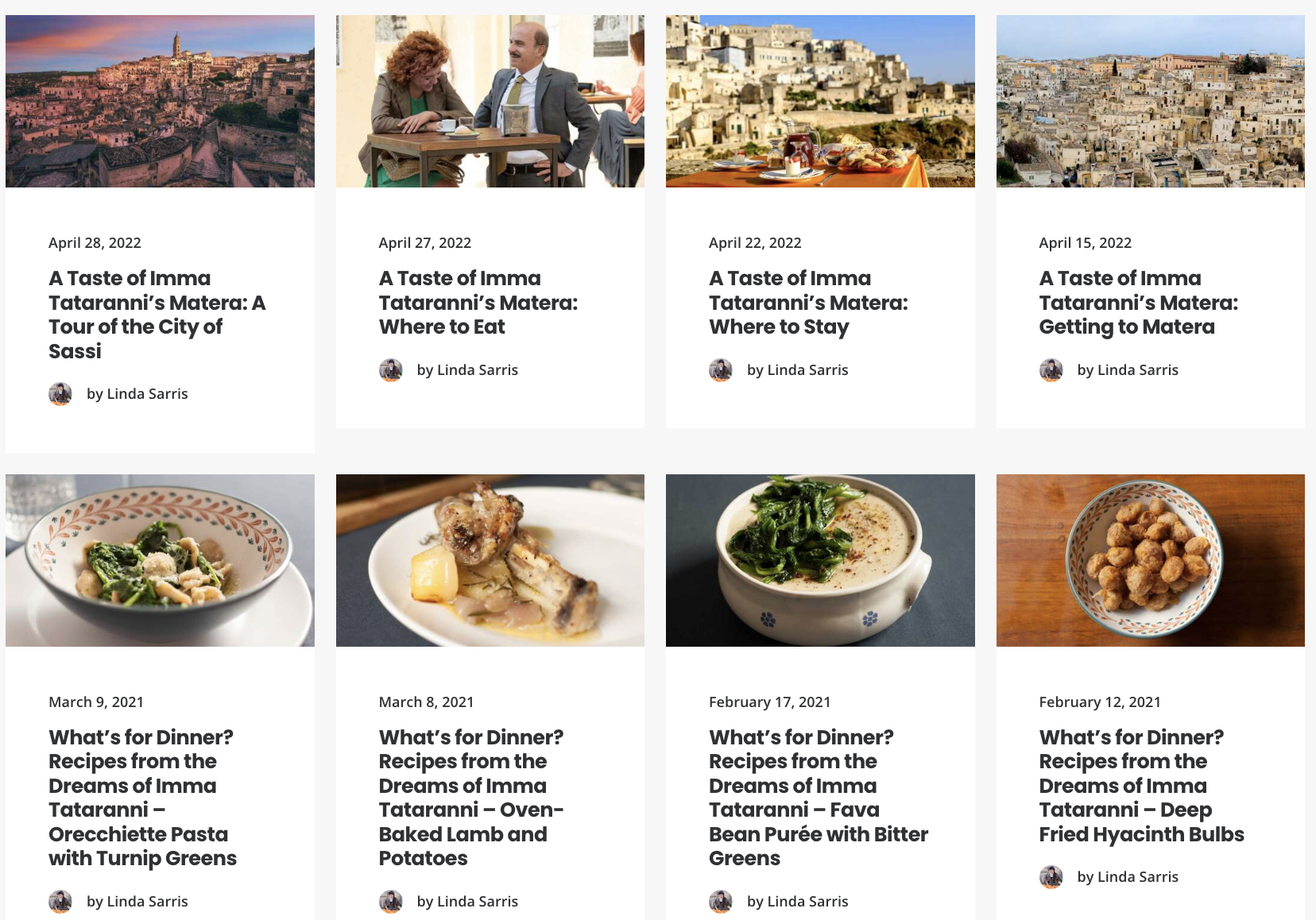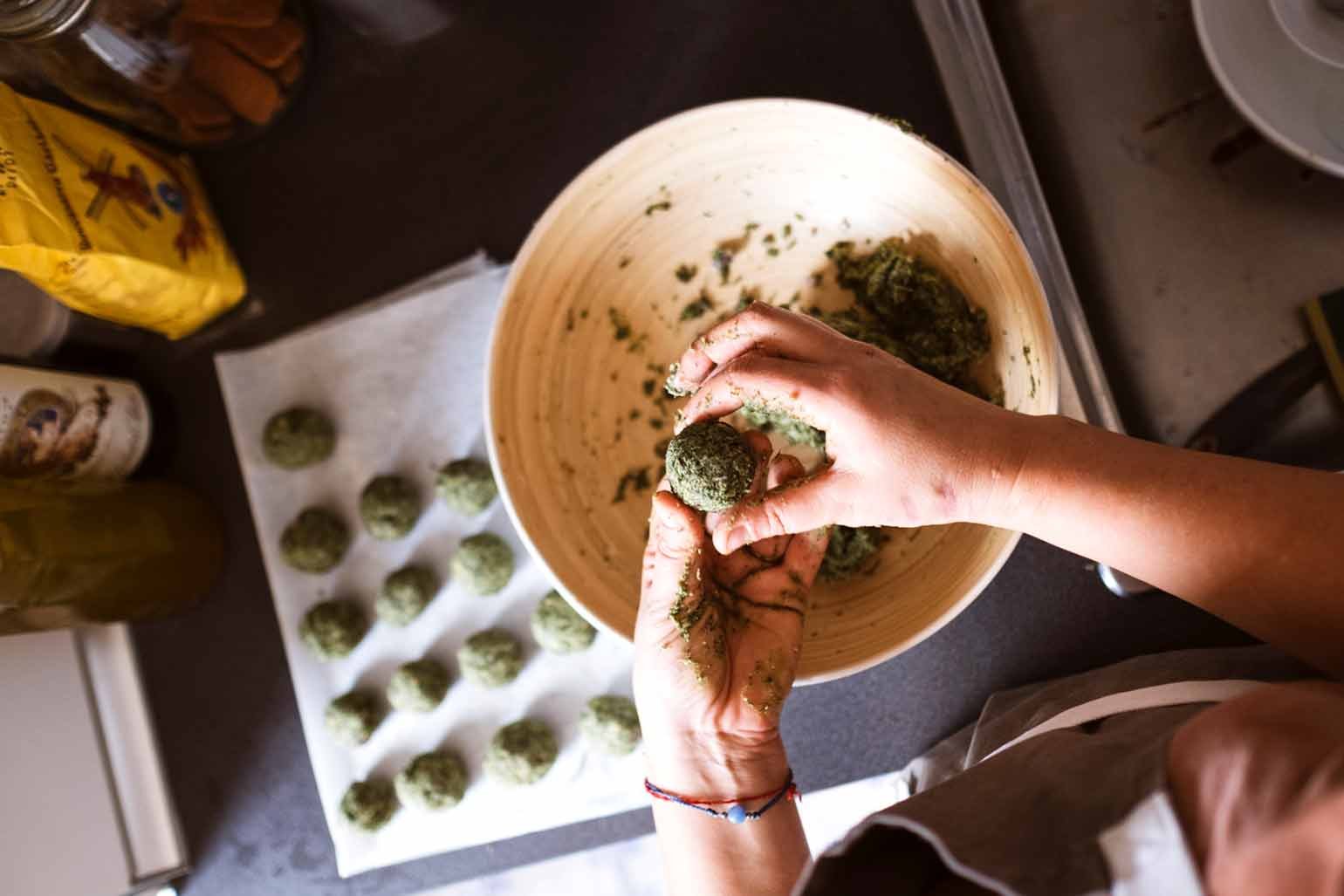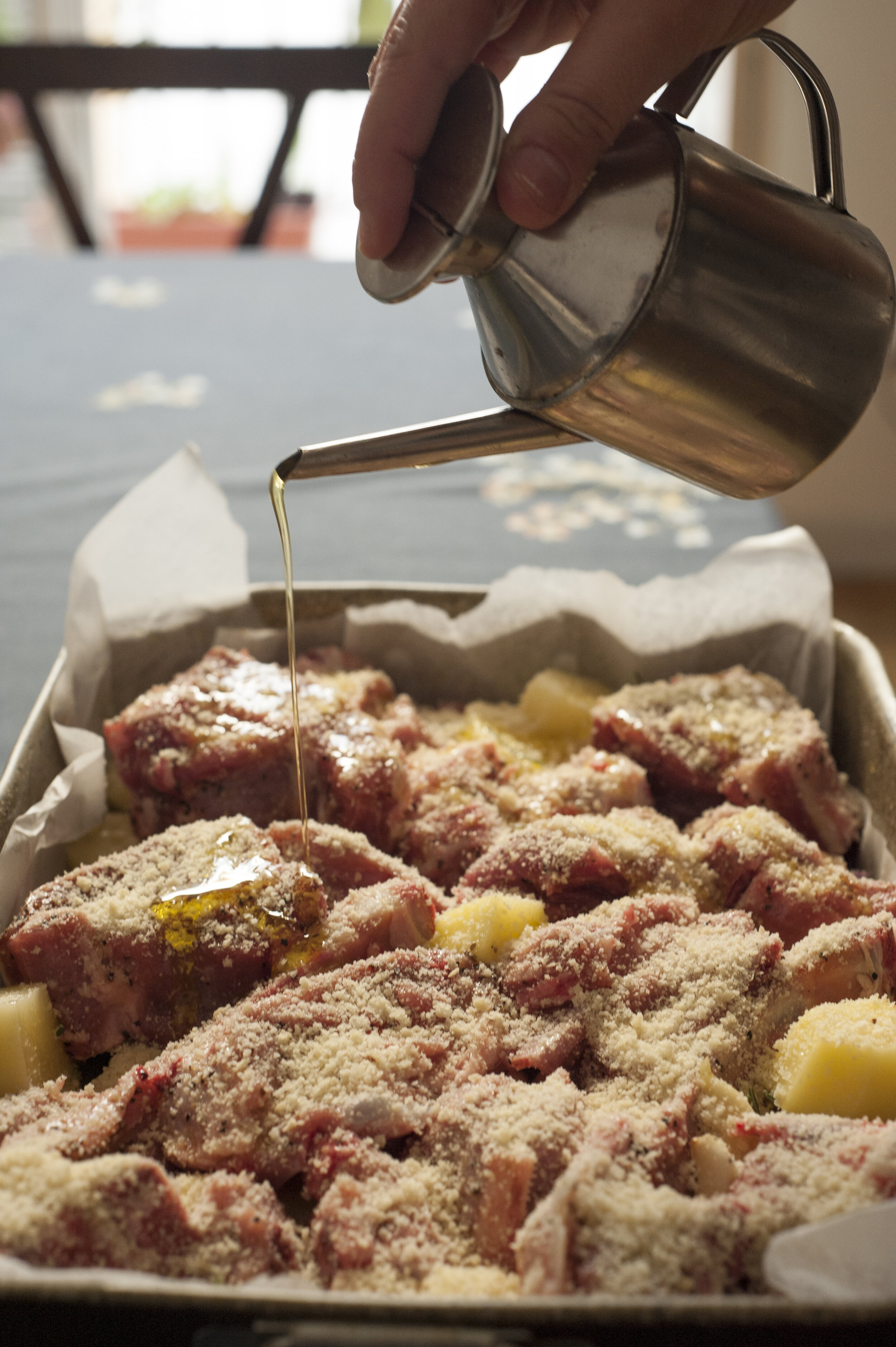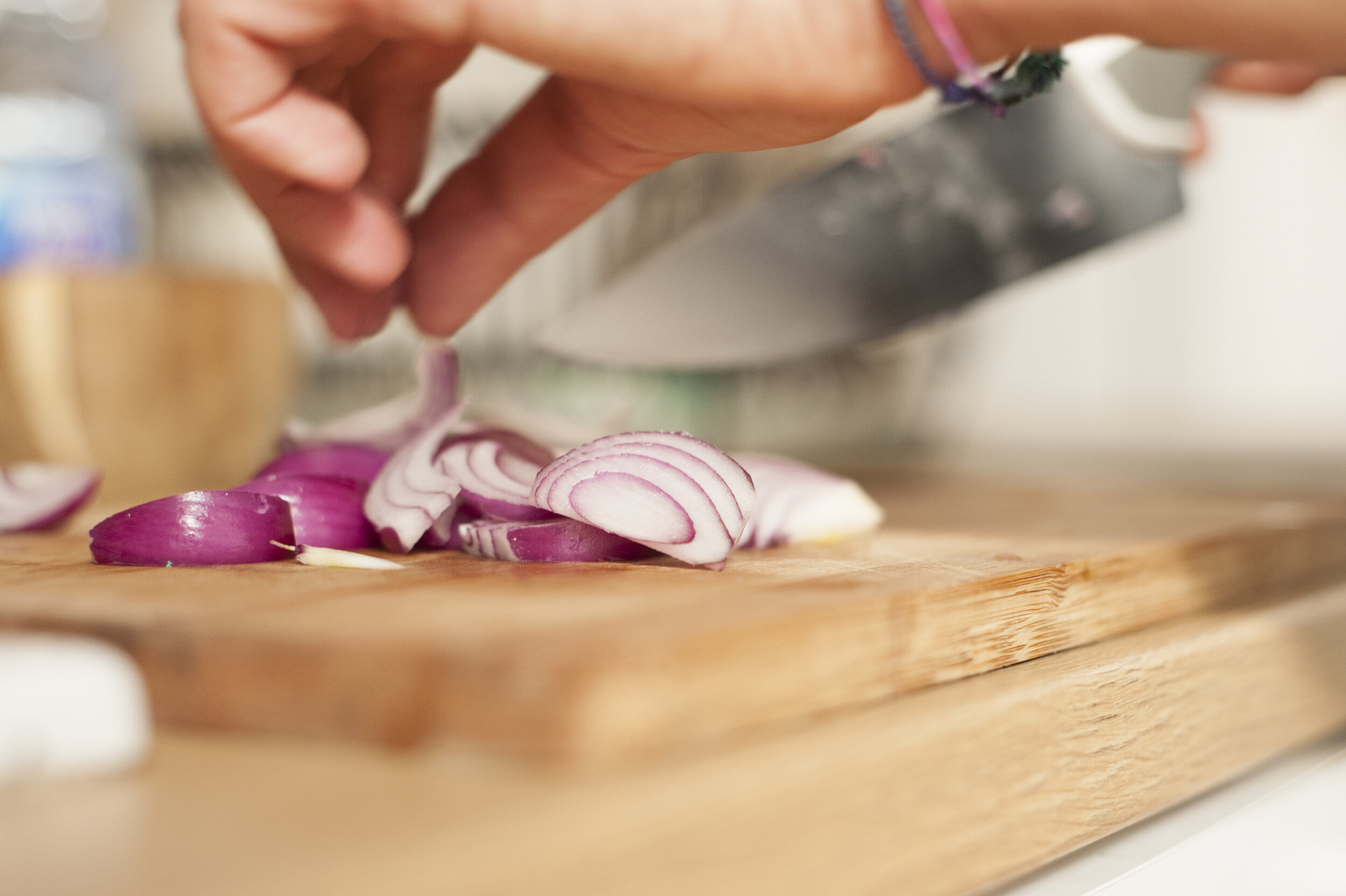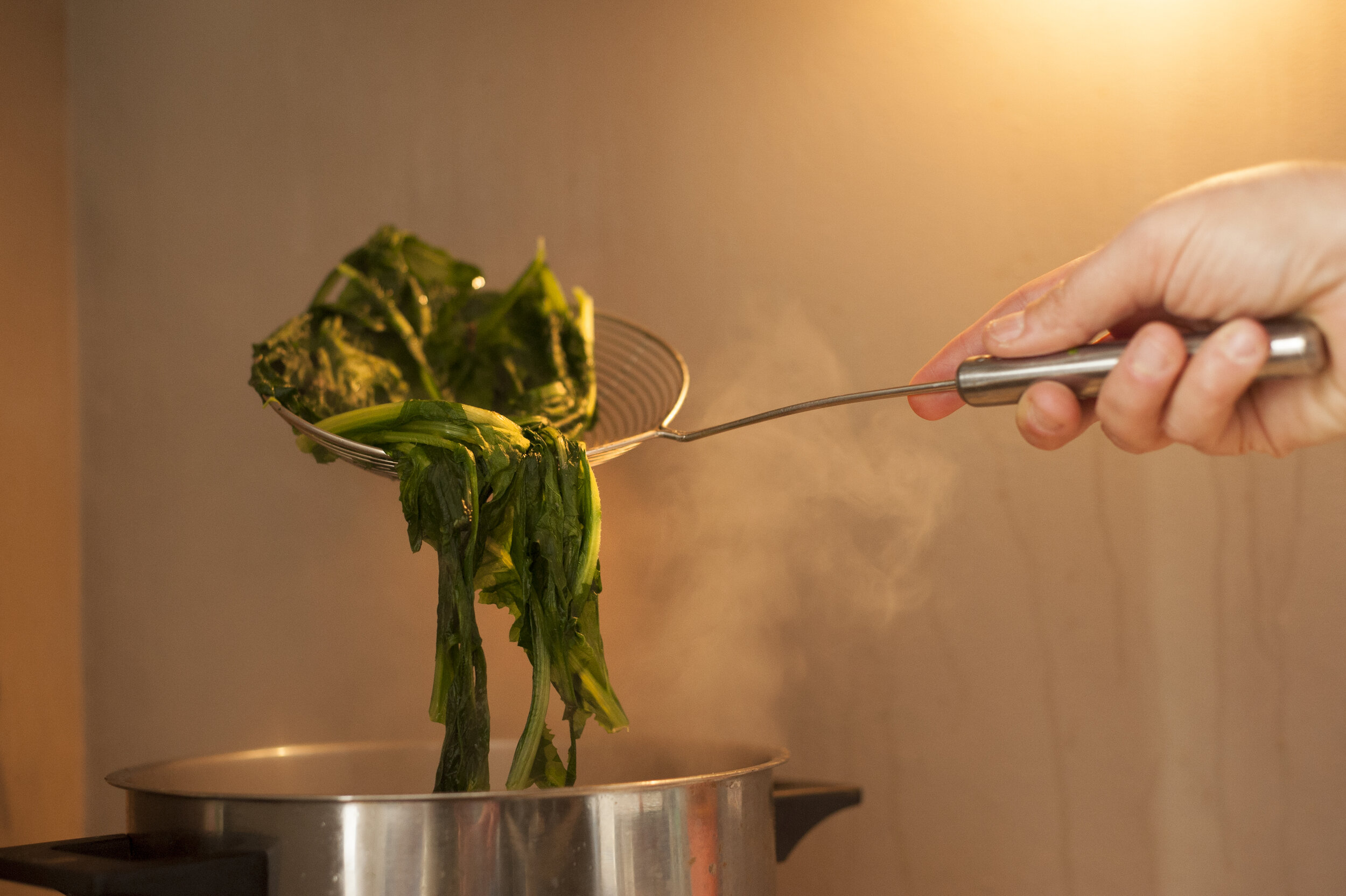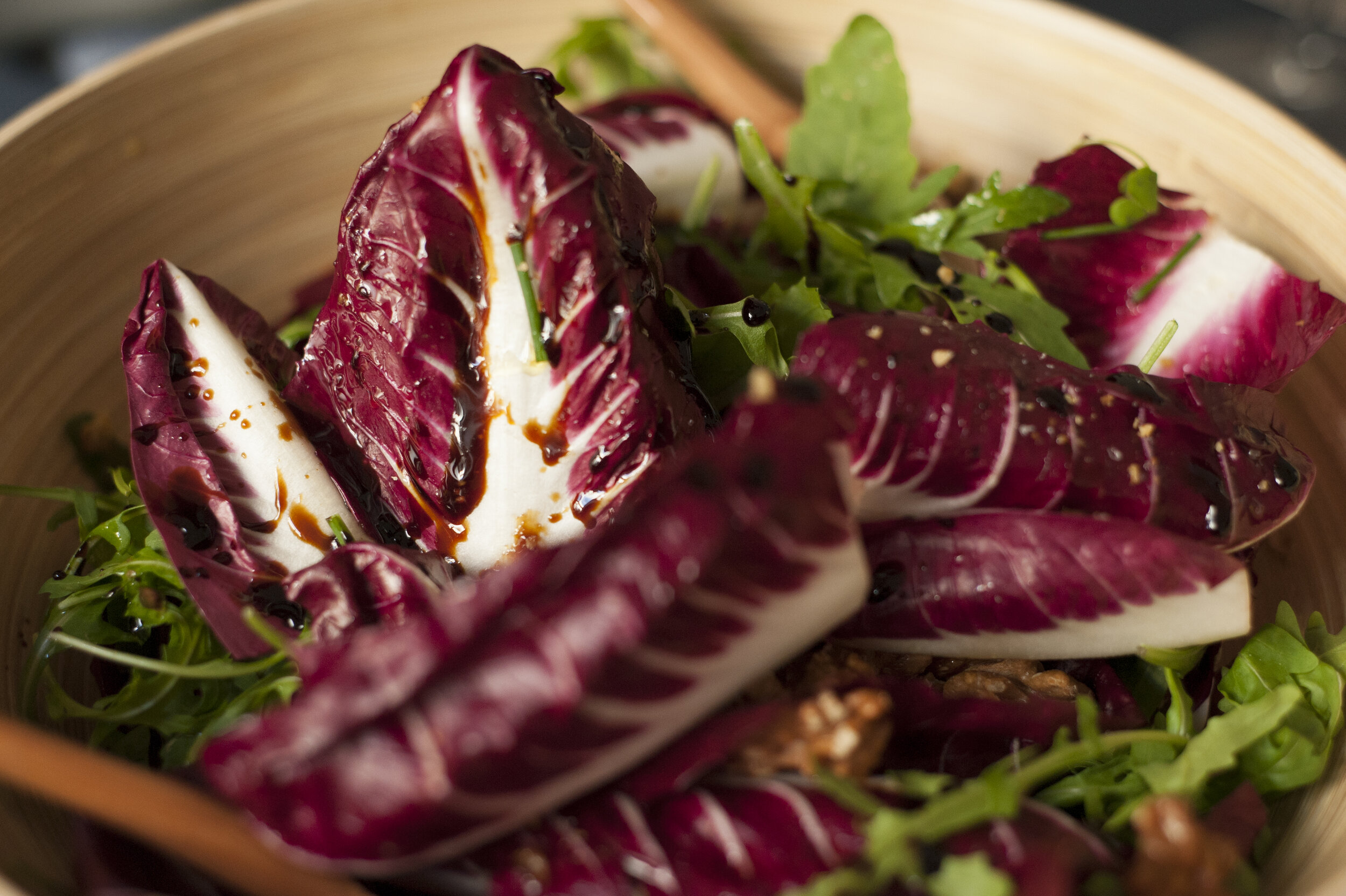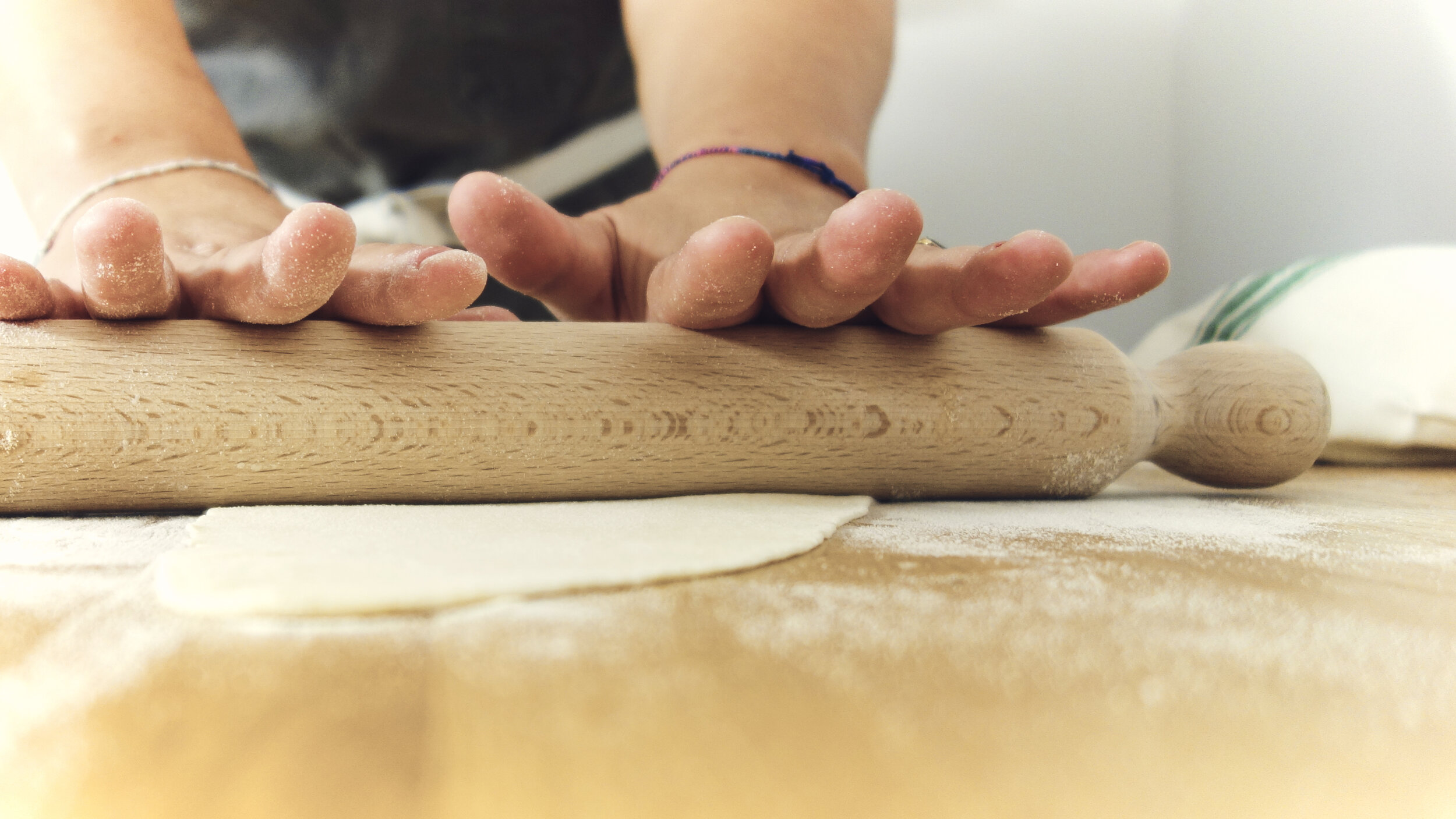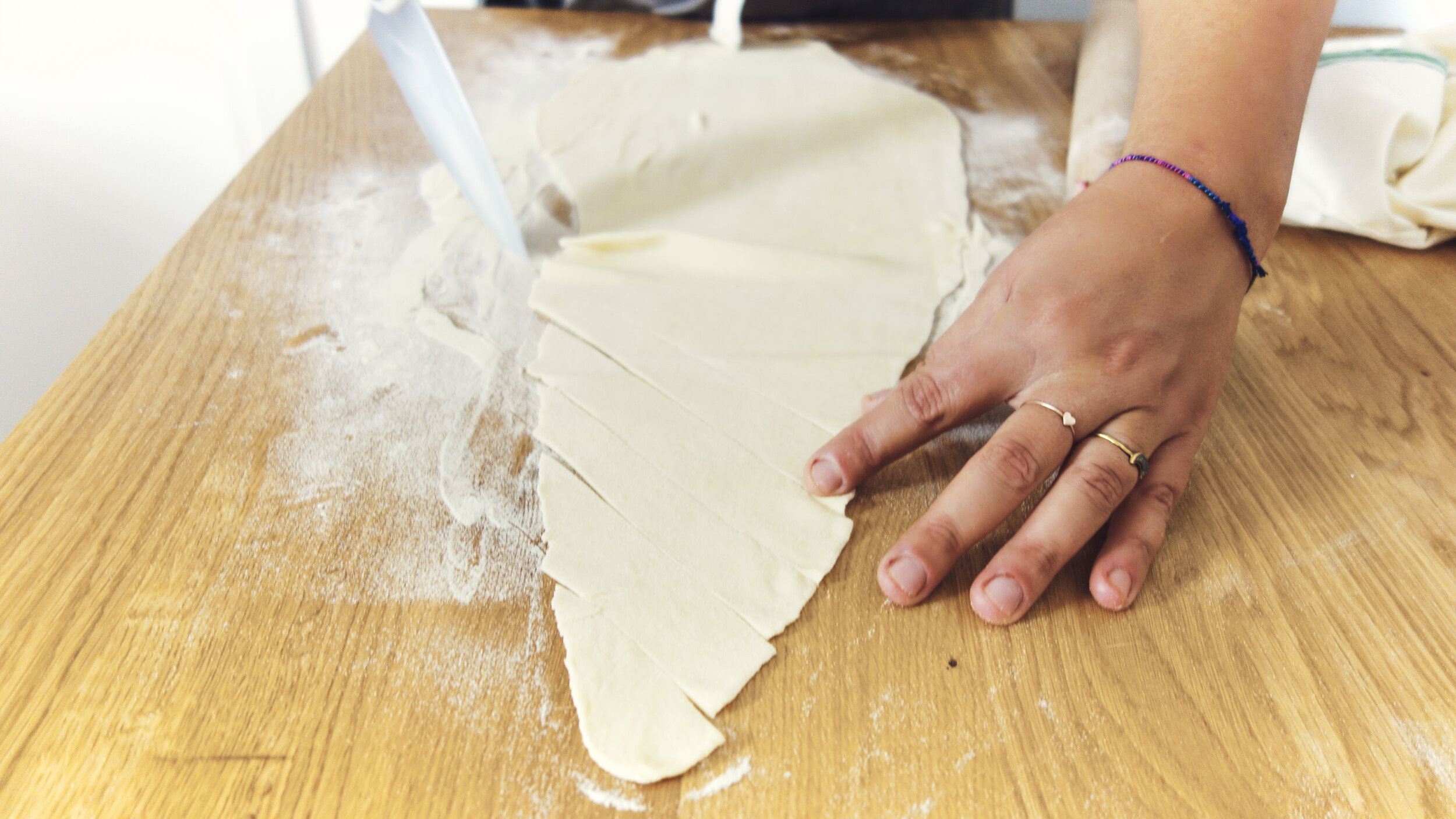Weekend in Palermo
No trip to Sicily is complete without a few days in the fascinating capital city of Palermo. The history of the island was layered with a wave of invaders from the Greeks to the Romans, from Arabs and Normans, to the French, and Spanish. Each one has left its mark and influenced the architecture, culture, landscape, customs, and culinary traditions of the island. The gorgeous golden light that hits the fountain in Piazza Pretoria, the boisterous outdoor food markets, beautiful churches, lively nightlife, and local food/wine will keep guests captivated from the first visit. With only a few days to explore, we’ve put together a curated itinerary to make the most of a weekend in Palermo — filling the days and nights with special experiences to get a taste of Sicily’s complex history, gorgeous city sites, and traditional cuisine.
FRIDAY
CHECK-IN TO YOUR LUXURY APARTMENT AT PALAZZO SOVRANA
VISIT THE CATTEDRALE DI PALERMO
SICILIAN DINNER AT BISSO BISTROT NEAR THE QUATTRO CANTI
GELATO AT CAPPADONIA GELATI
AFTER DINNER COCKTAILS AT BOTTEGHE COLLETTI OR STAY OUT ALL NIGHT WITH THE LOCALS IN THE VIVACIOUS LA VUCCIRIA BEHIND PIAZZA SAN DOMENICO
SATURDAY
MORNING MARKET TOUR AND STREET FOOD LUNCH
EXPLORE THE CITY:
TEATRO MASSIMO + CHIESA DI SAN GIUSEPPE DEI TEATINI
CHIESA DEL GESÙ + CHIESA DI SAN CATALDO
PALAZZO DEI NORMANNI
SANTA MARIA DELLO SPASIMO + ORTO BOTANICO DI PALERMO
APERITIVO AT ENOTECA PICONE WINEBAR
SEAFOOD DINNER AT CORONA TRATTORIA
SUNDAY
Plan to arrive on Friday afternoon, but remember to keep an eye open during landing at the Falcone Borsellino Airport because the view of the Mediterranean Sea and the nearby mountains is incredible. Take the Prestia e Comandè airport shuttle bus or a shared taxi to Palermo’s centro storico and check-in to your luxury private apartment at Palazzo Sovrana. Basing yourself in the heart of the city center will allow you to explore as much as possible within walking distance from home, while still enjoying the best view in town of Italy’s largest opera house, Teatro Massimo, just outside of your window!
Settle in, unpack, and then take a stroll down Via Maqueda towards the “Quattro Canti” four corners cross street at Corso Vittorio Emanuele. The nearly-identical Baroque facades represent the four seasons, four patron saints of Palermo, and the Spanish Kings of Sicily. Walk down the pedestrian street toward the UNESCO World Heritage Site at the Roman Catholic Cattedrale di Palermo. A simple entrance fee to the royal tombs will cost €1,50 but for €10, you can see it all, including the underground rooms, the crypt, treasury, royal tombs, and especially the rooftop where you have one of the best views of the whole city.
Put your name down on the list for a dinner at Bisso Bistrot near the Quattro Canti and enjoy an Aperol spritz or a typical glass of Grillo white wine outside while you wait. Bisso is a casual yet lively restaurant with typical Sicilian dishes and affordable prices. You will love visiting Palermo because everything is so cheap! Stop by Cappadonia Gelati before 10PM for a taste of the city’s best gelato featuring pistachios from Bronte, or Sicilian almonds, and seasonal fruit sorbets like lemon, pomegranate or watermelon.
If you’re ready to take the city by storm, the nightlife in Palermo has a lot to offer from small casual bars to chic cocktail spots and of course lots of delicious street food for a late night bite. Check out Botteghe Colletti for a negroni or stay out all night with the locals in the vivacious La Vucciria behind Piazza San Domenico.
On Saturday morning, don’t splurge on breakfast because the city’s outdoor markets have plenty of food to offer. Book a market tour or street food tasting experience with a local guide or check out the markets on your own, starting with Mercato del Capo behind the Teatro Massimo theatre and ending in Ballarò with a fried plate of panelle chickpea fritters or a pani câ meusa specialty spleen sandwich for the adventurous foodies. Don’t miss the small carts selling sfincione a fluffy Palermitan pizza or other market specialties like swordfish meatballs, arancine rice balls or a charcuterie platter with ricotta al forno, pecorino and sliced Sicilian salami.
Maybe it’s time for an afternoon nap or you might be ready to see the sites. Palermo has so much to offer from churches to parks, to the seafront marina, or museums. I recommend you pick one or two and not try to over do it. Some of the main sights you will pass during the weekend anyway and you can take time to pop into churches if you want to see more. Chiesa di San Giuseppe dei Teatini is worth a look and its located in one of the corners of Quattro Canti which you will pass over and over again. Chiesa del Gesù is at the end of the Ballarò market and features some of the most beautiful Baroque marble and painted ceilings in Palermo. The Chiesa di San Cataldo is the one with the three red domes in Piazza Bellini and if you want more of an in-depth visit head out to the Palazzo dei Normanni for an afternoon exploring the 12th-century Arab-Norman-Byzantine architecture of Cappella Palatina. Santa Maria dello Spasimo is a hidden gem in the Kalsa neighborhood. This unfinished Catholic Church is an example of late Gothic style architecture, that is now currently used as an open-air space for theatre and jazz performances. The Orto Botanico is the University of Palermo's 200-year-old lush botanical garden with an important collection of citrus trees, tropical plants, a herbarium, and glass greenhouses.
OK you’ve done the touring and now it’s time to treat yourself. Meet up for aperitivo at Enoteca Picone wine bar just a few blocks away from the main high-end shopping area of Via della Libertà. Sit outside for an hour or two before enjoying a local seafood dinner at Corona Trattoria. The Corona family brings a cheerful loving vibe to this chic trattoria. With daily dishes featuring local seafood and traditional Sicilian specialties like pasta with squid ink and bottarga, sweet-and-sour caponata, a plate of raw local gamberri rossi, or fried calamaretti. The extensive wine list curated by Orazio Corona features hard-to-find natural and traditional wines from all around Sicily. Make sure you have a reservation because this small trattoria books up quickly. Keep the Saturday night party going with drinks at St’Orto or BoCum, two great places for cocktails in Palermo’s downtown.
On Sunday, there is still time to finish up a few things before taking off for the airport. Every Sunday there is an antique flea market in the square at Piazza Marina. Check out Giardino Garibaldi, the piazza’s small park, to see the famous “ficus macrophylla” tree — it’s the largest in all of Europe! One more not-to-miss stop is I Segreti del Chiostro, a secret pastry shop in the Chiesa di Santa Caterina church near the famous tiered fountain between Piazza Pretoria and Piazza Bellini. Look for a small sign and an attendant outside who will direct you upstairs to see a small indoor garden and this very special shop where long-lost Sicilian pastries are still made. Pack up a few almond biscotti, frutta di martorana marzipan fruits, or a pack of cannoli to take home with you — if you can resist not eating them all not he spot. After one last sweet taste of Sicily, you’ll be ready to get your bags from the hotel and make your way back to the airport. If you'll be staying in Sicily a bit longer, check out our list at the bottom for a few more ideas after your Weekend in Palermo.
Where to Stay in Palermo:
Where to Eat/Drink:
BISSO BISTROT, VIA MAQUEDA, 172A, 90134 PALERMO
CORONA TRATTORIA, VIA GUGLIELMO MARCONI, 9, 90141 PALERMO
CAPPADONIA GELATI, VIA VITTORIO EMANUELE, 401, 90134 PALERMO
BOTTEGHE COLLETTI, VIA ALESSANDRO PATERNOSTRO, 79, 90133 PALERMO
TAVERNA AZZURRA, VIA MACCHERRONAI, 15, 90133 PALERMO
ENOTECA PICONE, VIA GUGLIELMO MARCONI, 36, 90141 PALERMO
CASA STAGNITTA, DISCESA DEI GIUDICI, 46, 90133 PALERMO
I SEGRETI DEL CHIOSTRO, PIAZZA BELLINI, 33, 90133 PALERMO
Places to Visit:
TEATRO MASSIMO, PIAZZA VERDI, 90138 PALERMO
CATTEDRALE DI PALERMO, VIA VITTORIO EMANUELE, 90040 PALERMO
QUATTRO CANTI, VIA VITTORIO EMANUELE, 80146 PALERMO
VISIT THE OUTDOOR FOOD MARKETS OF BALLARÒ, MERCATO DEL CAPO, LA VUCCIRIA
PALAZZO DEI NORMANNI, PIAZZA INDIPENDENZA, 1, 90129 PALERMO
CHIESA DI SAN GIUSEPPE DEI TEATINI, VIA VITTORIO EMANUELE, 311, 90134 PALERMO
CHIESA DEL GESÙ, PIAZZA CASA PROFESSA, 21, 90134 PALERMO
CHIESA DI SAN CATALDO, PIAZZA BELLINI, 1, 90133 PALERMO
SANTA MARIA DELLO SPASIMO, VIA DELLO SPASIMO, 10, 90133 PALERMO
ORTO BOTANICO DI PALERMO, VIA LINCOLN, 2, 90133 PALERMO
MERCATO DI PIAZZA MARINA, PIAZZA MARINA, 22, 90133 PALERMO
If you are just starting your Sicilian adventures, a few days in Palermo is the perfect way to begin your exploration of the island. After our expert itinerary in Palermo, head out of town to see some of our other nearby favorite spots:
Take a 20-minute bus ride out to the beach in Mondello. Enjoy a gelato on the beach at Baretto, relax under an umbrella at Lido Sirenetta, or dine out with a multi-course tasting menu at Bye Bye Blues restaurant.
If you can’t make it during the annual July 14th celebration, you can drive up to the sanctuary of Santa Rosalia. Pay respect to Palermo’s patron saint at her untouched sacred cave at the top of Monte Pellegrino, where visitors can pray and experience all of her magical witchy vibes where she lived reclusively before she appeared nearly 500 years later during the plague of 1624.
Drive through the rolling hills of the Val di Mazara to the small town of Camporeale in the Monreale DOC winemaking region. Take a vineyard tour at Sallier de la Tour winery and enjoy some local seasonal bites paired with your tasting of top-quality Syrah, Grillo, Inzolia, and Nero d’Avola wines. Visit the astonishing Cattedrale di Monreale, one of Sicily’s treasured UNESCO World Heritage Sites. The duomo is a complex depiction of Sicily’s layered history, by mixing Roman Catholic and Orthodox layouts with the stunning Middle Eastern-style triple-apsed choir. The geometric marble flooring, Baroque chapels, Byzantine stained glass, intricate woodworked rooftops, and gold mosaics will take your breath away.
Road trip out to the Anna Tasca Lanza Cooking School for hands-on farm-to-table cooking lessons with Sicilian culinary expert Fabrizia Lanza.

